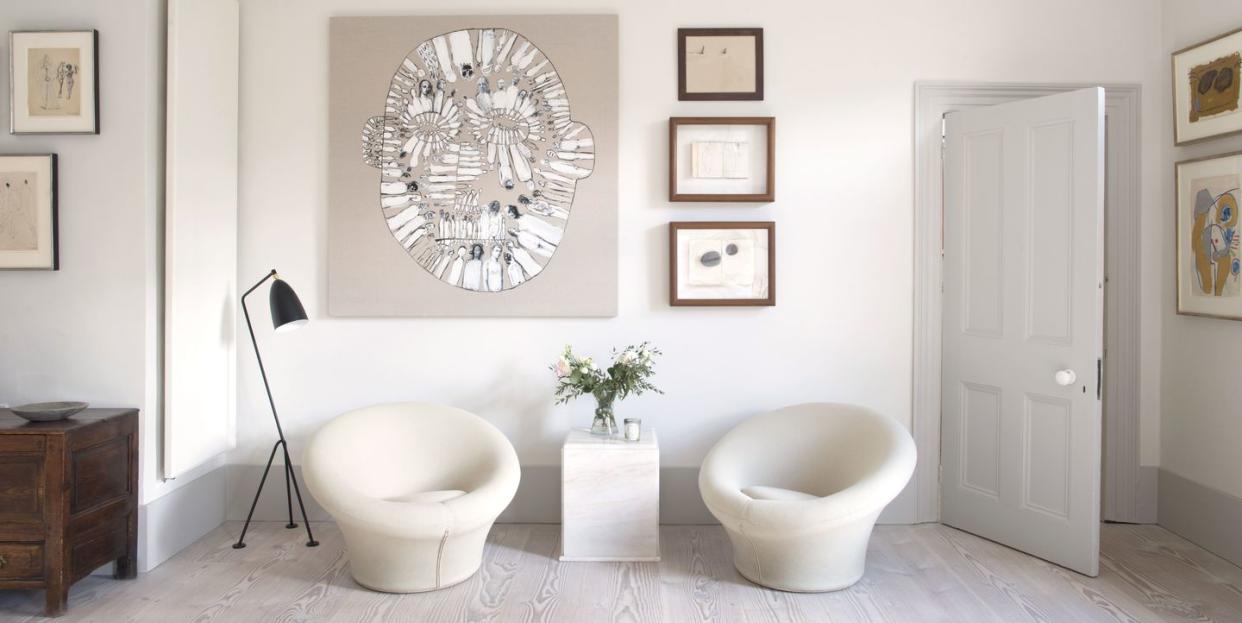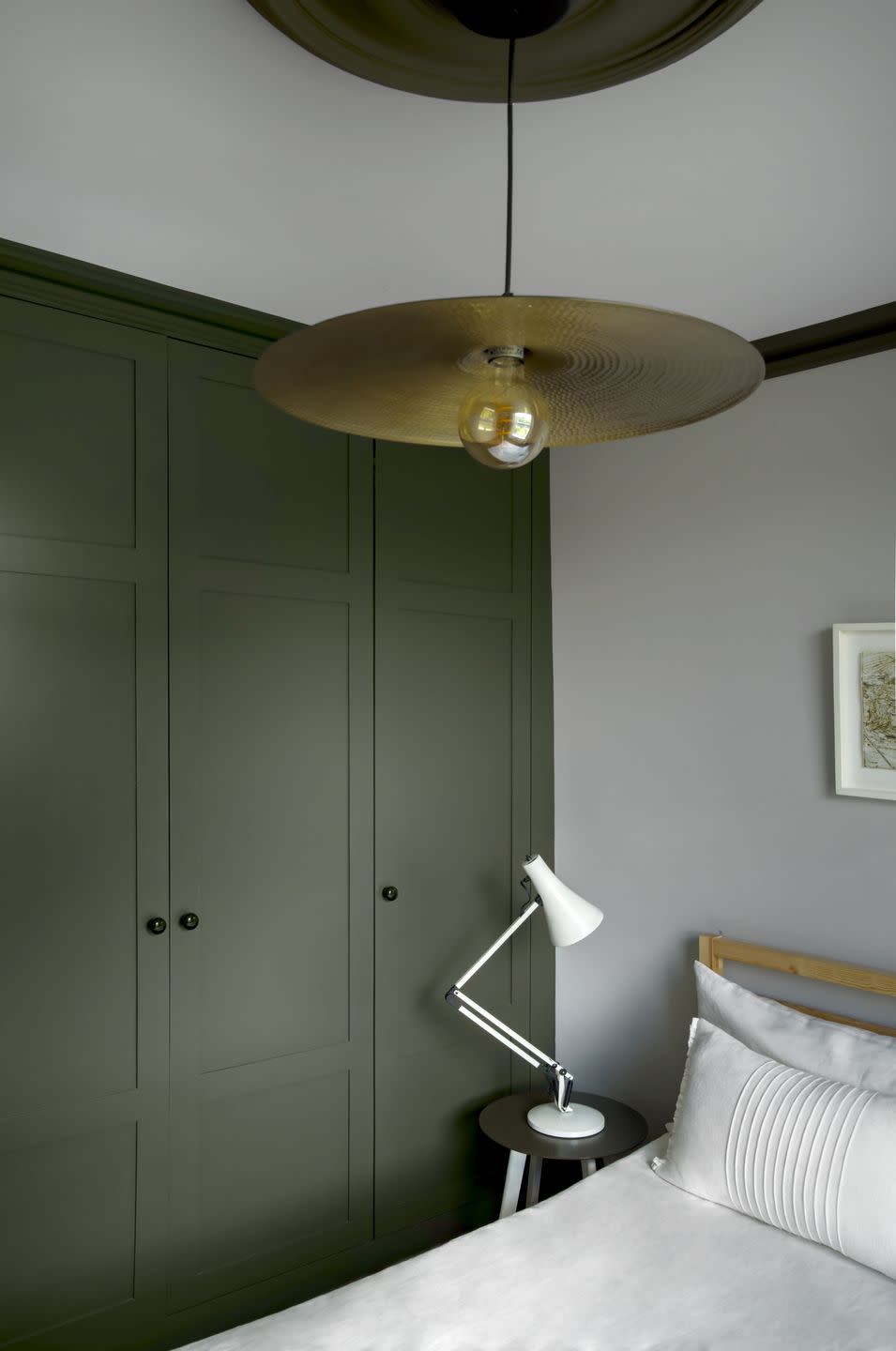Studio Iro on art, antiques and perfectly imperfect interiors

Rising talent Lucy Currell owes her passion for interiors to her father and grandma, who took her on tours of antique fairs and car-boot sales as a child. ‘We’d buy things and sell them on. I remember having a stall at Alexandra Palace Antiques Fair with my dad when I was 10,’ she says. Here, she talks about her approach to design and reveals her go-to suppliers for creating a home with soul.

What's her background?
After doing a degree in history and sociology at Manchester University, Currell went on to study at the New York School of Interior Design and then had varied jobs: a stint at Brazilian design showroom Espasso, and a role as lead designer in the staging department at property developer Ash NYC. In 2017, having returned to London, Currell set up Studio Iro and now masterminds projects from her office in Forest Gate.
What’s her style?
Modern and understated, with muted colours and statement art that bring rooms to life. The Japanese philosophy of wabi-sabi, which celebrates natural materials and imperfection, is at the forefront of Currell’s designs. ‘I apply it to every aspect of my process,’ she explains. ‘I would say my designs are very soulful and warm, while remaining visually balanced and calming.’

She cites Belgian designer Axel Vervoordt – another exponent of wabi-sabi – as an inspiration. ‘I love how antiques are such a big part of his interiors. There’s always a story to be told, and it makes the pieces much more meaningful.’
What are her recent projects?
Currell has converted an old pub in Norfolk into a home that she describes as her ‘most maximalist’ project to date. ‘I took inspiration from the arts and crafts period, particularly William Morris and his botanical themes,’ she says. Currell has also been working on her Forest Gate home, a former blacksmith’s cottage and workshop dating from the 1800s. ‘It’s a warm, eclectic mix of inspirations from my travels, particularly to Mexico and Japan, with terracotta flooring in the kitchen and exposed brickwork painted in limewash,’ she reveals.

What is she currently working on?
In collaboration with London architects McLaren Excell, Currell is converting an old piano factory in Kentish Town for a client with ‘a wonderful collection of antiques and art from around the world’. The space measures a cavernous 557 square feet and has concrete floors, high ceilings and huge windows. ‘The challenge is to bring in warmth, comfort and that homely feeling,’ the designer explains. ‘We’re using only organic and sustainable materials, which will enhance the owners’ wellbeing by keeping them connected to the natural world.’
Currell says: ‘I approach each project thinking about how the space will make you feel when you’re in it – it has to be functional as well as comfortable, and look good.’ studioiro.co
EXPERT ADVICE
Studio Iro founder Lucy Currell on art, antiques and bringing a wabi-sabi feel to your home
The benefit of a wabi-sabi approach to interiors is contentment, not striving for newness and what’s ‘trending’. Paint walls, ceilings and woodwork in an earthy colour to create a sense of visual tranquillity that encourages relaxation. It’ll often make the room feel bigger, too, as there’s less contrast for the eyes to take in.
A room should feel balanced, but that doesn’t mean things have to be symmetrical or match in colour. If you stick to natural materials like wood, unpolished marble, rattan and linen, you’ll usually find they do the work for you. And colours from nature always harmonise with each other – I like browns, greens, terracotta, sand and stone.
I’m not a fan of matching an artwork’s palette with your home’s colour scheme, but I do think it’s always important to hang art at the right height. People often hang it too high, but I believe it should engage with the furniture around it. I’m forever inspired by Kettle’s Yard in Cambridge, where artworks are hung above door frames and under windows. Think of how they can be appreciated at eye level when you’re sitting in an armchair.
When buying vintage designs, I look for craftsmanship above all. They don’t have to be in perfect condition, but were they made well? The history of a piece gives it character, patina and originality.
THE LITTLE BLACK BOOK
Every project has its own unique list of suppliers and craftspeople. Part of making it special is finding the right mix
VINTAGE
AU, founded by interiors stylist Anna Unwin, has been a go-to for me since I started my studio. The objects Anna sells align beautifully with the wabi-sabi philosophy, whether it’s a rustic wooden bowl or an irregular ceramic piece. annaunwin.com
SURFACE FINISHES
I love everything about clay plaster specialist Clayworks, including its respect for nature, the environment and human wellbeing. The front of my house has a Clayworks finish in the same orange that Luis Barragán used in his home and studio in Mexico City. clay-works.com
TEXTILES
I’m working with Nest Design on some pieces for my Kentish Town project. The textiles that founder Lucy Bathurst creates are pieces of art in their own right. They give antique and vintage textiles a second life. nestdesign.co.uk
CRAFT
I love the way that craft and makers are celebrated at London gallery The New Craftsmen. I’ve bought woven textiles and handmade ceramics here, which sit beautifully alongside antiques in our interiors. thenewcraftsmen.com


